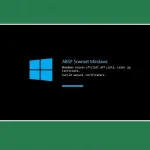Changing deodorant won't help until the space industry changes

The environmental implications of human activities extend far beyond our immediate surroundings, impacting global phenomena such as the ozone layer. While individual actions like switching to environmentally friendly products are commendable, they might not be sufficient to combat larger systemic issues. One such issue is the impact of space exploration on the ozone layer, a concern that has gained attention in recent years.
As we venture further into space, it is crucial to recognize that our actions can have unintended consequences on Earth's atmosphere. This article delves into the complex relationship between space exploration and the ozone layer, highlighting the need for a holistic approach to environmental protection.
Prohibition of CFCs: A Step Forward, but Not Enough
In 1975, scientists Mario Molina and Sherwood Rowland revealed that chlorofluorocarbons (CFCs), widely used chemicals, were contributing to the depletion of the ozone layer. This discovery prompted global concerns and, ultimately, the signing of the Montreal Protocol in 1989, which aimed to phase out the use of CFCs. This international agreement marked a significant step toward protecting the ozone layer, leading to its gradual recovery.
CFCs are composed mainly of chlorine, fluorine, and carbon. Originally developed as refrigerants, their utility expanded to aerosol propellants and solvents. The work of Molina and Rowland established that when CFCs are released into the atmosphere, they break down under ultraviolet radiation, releasing chlorine atoms, which then react with ozone molecules, leading to ozone depletion.
Thanks to the global commitment to eliminate CFCs, the ozone layer has shown signs of recovery. However, recent research indicates that the progress is slowing, largely due to the increasing frequency of space launches. While the reduction of CFCs was a monumental achievement, it appears that new challenges have emerged that threaten to undermine these efforts.
The Growing Threat of Space Launches
For over three decades, experts have acknowledged that space launches contribute to ozone layer depletion, but the effects were relatively minor until recently. The exponential increase in space activity has raised alarms about the long-term impact on the atmosphere.
- In 2019, there were 97 orbital space launches globally.
- By 2024, that number surged to 258 launches.
- This rise is attributed to the mass deployment of satellites by companies like Starlink, as well as increased scientific and commercial missions.
The crux of the problem lies in where these emissions occur. When pollutants are released at lower altitudes, natural processes like rain can help wash them away. However, emissions at higher altitudes, where many space vehicles operate, are not subject to such cleansing mechanisms. As a result, the adverse effects on the ozone layer can be up to 100 times more severe.
Research has identified that the primary pollutants released during space launches include gaseous chlorine and soot particles. Gaseous chlorine behaves similarly to CFCs in destroying ozone, while soot contributes to atmospheric warming, further driving reactions that deplete ozone.
Interestingly, only a small fraction of launches—approximately 6%— utilize cryogenic fuels, which do not produce these harmful emissions. The majority of rockets still rely on more conventional fuels that contribute significantly to atmospheric pollution.
The Potential Future Impact
Researchers from the University of Canterbury and ETH Zurich have conducted simulations to assess the trajectory of space launches and their potential effects on the ozone layer. Their findings indicate that, at the current rate, the number of launches could reach around 2040 by 2030. If the fuel composition remains unchanged, this could result in an average global ozone thickness reduction of nearly 0.3%, with seasonal decreases of up to 4% in polar regions, particularly Antarctica.
This scenario threatens to reverse the hard-won progress achieved through the Montreal Protocol. Furthermore, studies suggest that re-entries of spent rocket stages could exacerbate the situation even further, complicating efforts to analyze and mitigate these emissions.
Addressing the Challenge: Future Steps
Given the growing body of evidence surrounding the impact of space activity on the atmosphere, it is imperative to explore new approaches to rocket propulsion. These steps could include:
- Investing in the development of eco-friendly propellant alternatives.
- Promoting the use of cryogenic fuels across more space missions.
- Conducting thorough assessments of the necessity of each launch to ensure that only essential missions proceed.
- Increasing public and governmental awareness about the environmental impact of space exploration.
While economic considerations often dominate discussions about space, it is crucial to remember that the health of our atmosphere is a shared responsibility. Protecting the ozone layer is vital for safeguarding life on Earth, and we must balance our ambitions in space with the imperative to preserve our planet's environment.
For those interested in the implications of these findings, a related discussion is available in the following video, which explores the environmental impacts of modern space activities:
Ultimately, the journey toward sustainable space exploration requires collaboration among scientists, policymakers, and the public. By prioritizing environmentally conscious practices, we can ensure that our ventures into space do not come at the expense of our earthly home.




Leave a Reply